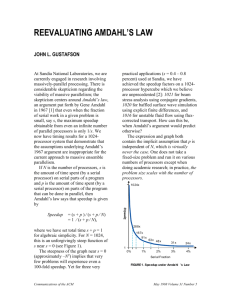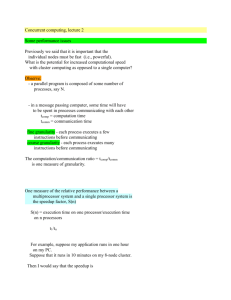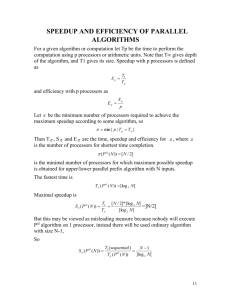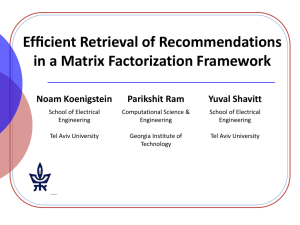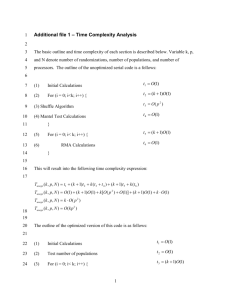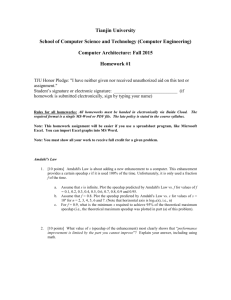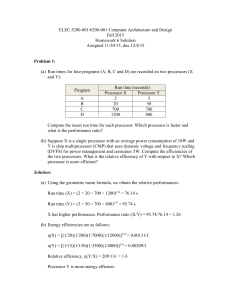Amdahl vs Gustafson
advertisement
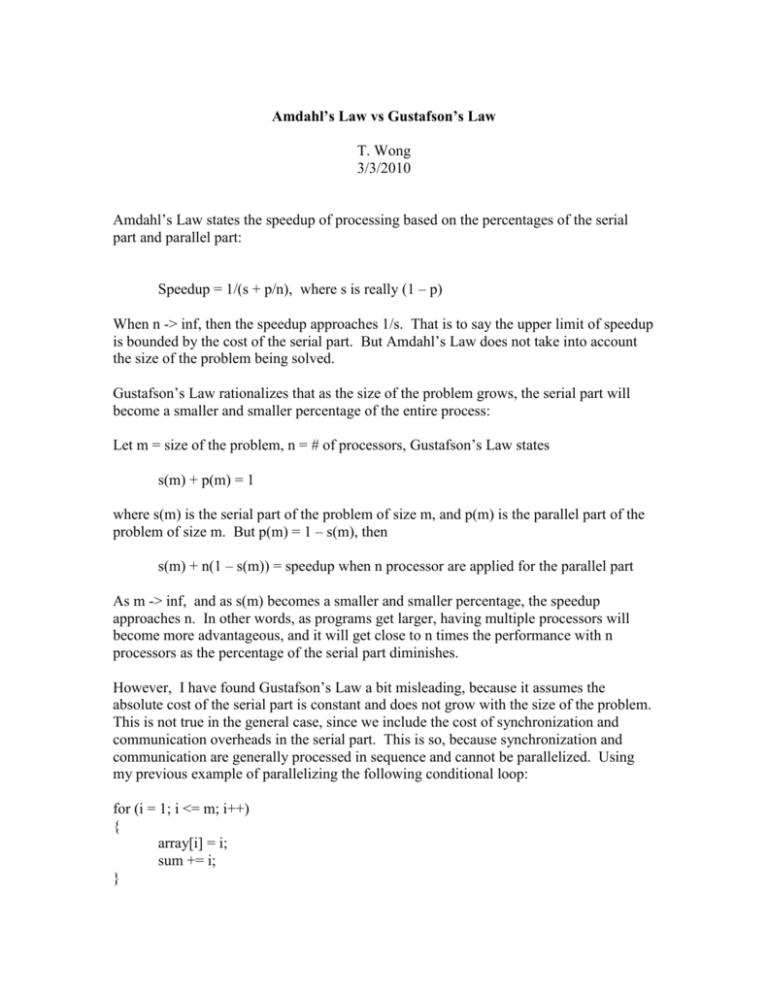
Amdahl’s Law vs Gustafson’s Law
T. Wong
3/3/2010
Amdahl’s Law states the speedup of processing based on the percentages of the serial
part and parallel part:
Speedup = 1/(s + p/n), where s is really (1 – p)
When n -> inf, then the speedup approaches 1/s. That is to say the upper limit of speedup
is bounded by the cost of the serial part. But Amdahl’s Law does not take into account
the size of the problem being solved.
Gustafson’s Law rationalizes that as the size of the problem grows, the serial part will
become a smaller and smaller percentage of the entire process:
Let m = size of the problem, n = # of processors, Gustafson’s Law states
s(m) + p(m) = 1
where s(m) is the serial part of the problem of size m, and p(m) is the parallel part of the
problem of size m. But p(m) = 1 – s(m), then
s(m) + n(1 – s(m)) = speedup when n processor are applied for the parallel part
As m -> inf, and as s(m) becomes a smaller and smaller percentage, the speedup
approaches n. In other words, as programs get larger, having multiple processors will
become more advantageous, and it will get close to n times the performance with n
processors as the percentage of the serial part diminishes.
However, I have found Gustafson’s Law a bit misleading, because it assumes the
absolute cost of the serial part is constant and does not grow with the size of the problem.
This is not true in the general case, since we include the cost of synchronization and
communication overheads in the serial part. This is so, because synchronization and
communication are generally processed in sequence and cannot be parallelized. Using
my previous example of parallelizing the following conditional loop:
for (i = 1; i <= m; i++)
{
array[i] = i;
sum += i;
}
Assuming we have n processors, this can be broken down into n tasks:
{
array[1] = i;
lock(sum);
sum += i;
unlock(sum);
}
{
array[2] = i;
lock(sum);
sum += i;
unlock(sum);
}
etc.
In the worst case, when all the tasks are accessing the sum variable at the same time, then
the processing cost is in the order of O(n). Then as problem size m -> inf, the cost of
synchronization/communication also approaches inf.
Instead, we should break down the loop to n parallel tasks, where n is a “reasonable”
fixed value < inf, and m is the size of the problem:
for (i = 1; i <= m/n; i++)
{
array[1] = i;
lock(sum);
sum += i;
unlock(sum);
}
for (i = m/n; i <= 2m/n; i++)
{
array[m/n] = i;
lock(sum);
sum += i;
unlock(sum);
}
etc
In this case, the overhead on synchronization is bounded by O(n). The overhead for
synchronization, in the above scenario, also grows in the order of m/n. Then o is a
constant percentage that is relative to the size of the problem. In this case, Gustafson’s
Law holds. This is analogous to have numerous post office workers take turns using a
stamp to stamp a sorted letter. Since everyone has to wait for the stamp, hardly any work
is done in parallel. It would be a more optimal arrangement to have several workers each
sorting a large number of letters in parallel, and then take turns using the stamp.
The moral of this story is that, even if you have infinite number of processors, it might
not be ideal to break down the tasks to too many small pieces.
The next question, naturally, would be how many parallel tasks should be run, given a
problem size and number of processors that can grow infinitely? To answer this, we need
to separate the synchronization/communication overhead from the serial part, since the
cost of synchronization/communication is directly related to the size of the problem.
Thus we will have
:
Speedup = s(m) + n(1 – s(m))
= s’(m) + no + n(1 – s’(m) – no)
Where s’(m) is the “pure” serial part without synchronization and communication
overhead, and no is the overhead. We use no, because the worst case overhead cost is
O(n).
= s’(m) + no + n – ns’(m) - nno
= s’(m)(1 – n) + n(1 + o(1 – n))
Assuming the percentage s’(m) is diminishing as m -> inf, no grows with n, the number
of processors being used for the parallel part. We want a speedup factor of x, as
m -> inf, and s’(m) -> 0. Then
x = n(1 + o(1 – n))
From the above, we can see that in order for x = n, either n = 1, or o approaches 0, which
cannot be true in the general case. So, Gustafson’s claim is not entirely valid, if we take
into the consideration that the overhead of synchronization/communication grows also
with the number of parallel tasks.
To be realistic, we assume m can grom to infinity, while n < inf is fixed
To find n:
n + o(1 – n) = x
n – o(n – 1) = x
n – no + o = x
n(1 – o) + o = x
n = (x - o)/(1 – o)
This is to say, as the problem size grows to infinity, we can find a fixed n for number of
parallel tasks running on n processors, where n < inf, then the speedup of x can be
achieved if we fix n at (x - o)/(1 – o). That is, we have a priori knowledge of the
percentage o.
Note that by fixing n < inf, no remains reasonable as m grows.
As an example, if the overhead is at 25%. To achieve 2 times the speedup, then
n = (2 – 0.25)/(1 – 0.25) = 1.75/7.5 > 2
for a problem size m -> inf

